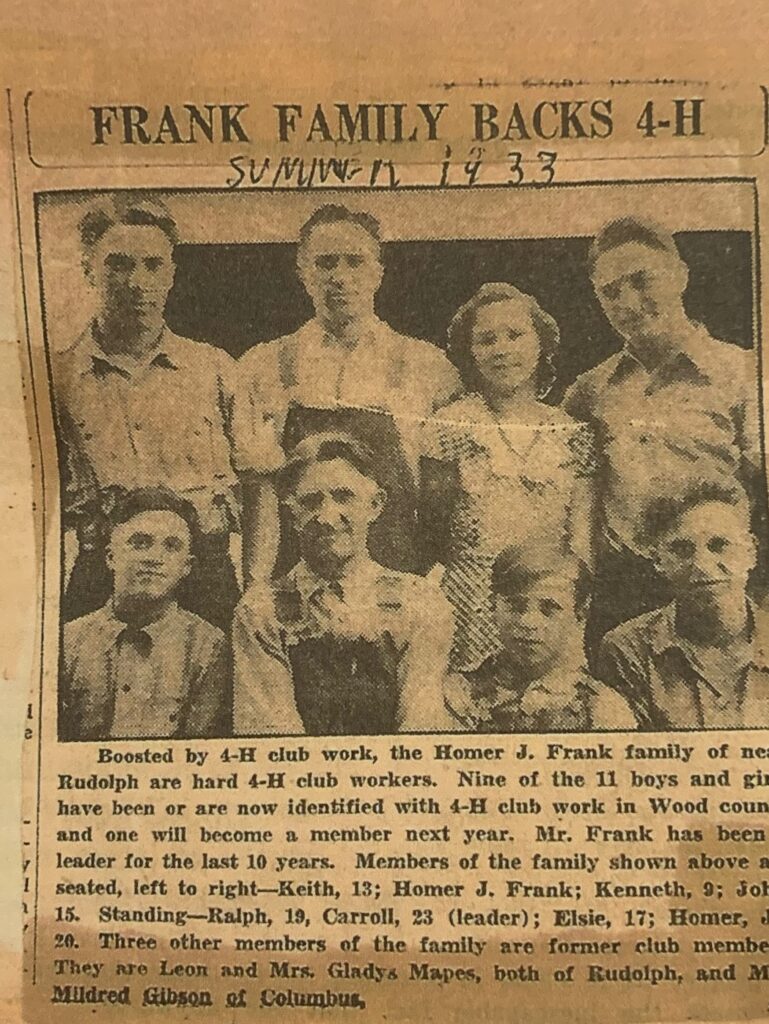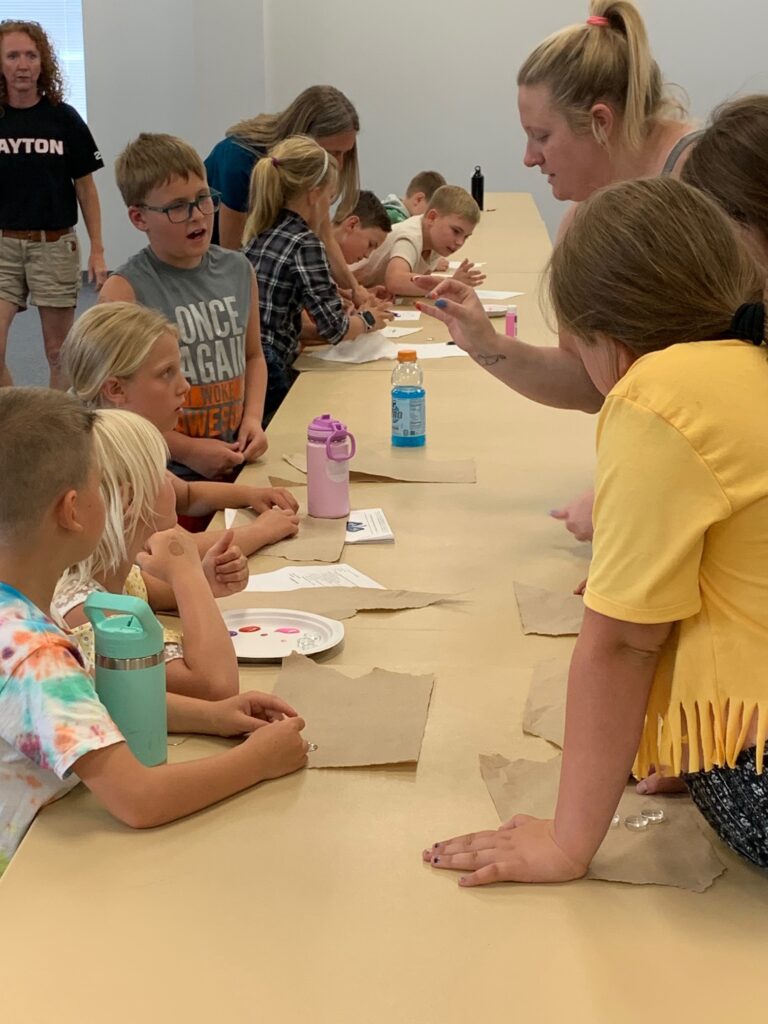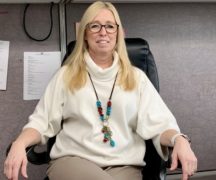By JULIE CARLE
BG Independent News
Wood County has a rich history with 4-H clubs. As the Wood County Fair celebrates its 150th fair, there are more than a dozen 4-H clubs that have been around for 50 years or more.
The grandparent of them all, Duke’s Mixture, formed in 1925, making it just two years away from celebrating 100 years of existence. Lake Harvesters 4-H club, which started in 1936, celebrates 87 years in 2023.
Six clubs have been around for at least 70 years. Three of the six started not long after World War II. Blue Ribbon Rangers, with 78 years of participation, started in 1945, and Tontogany 4-Leaf Clovers and Portage Valley, both with 77 years of membership, started in 1946. Leaders of Tomorrow, originally Farmers of Tomorrow, is in its 71st year after starting in 1952, and Golden Key and Farmcrafters both began in 1953 and are celebrating 70 years.
Three of the clubs clock in at 60-plus years. Perry Go Getters and Dowling Stitch, Stir, and Stock both celebrate their 65th anniversary this year after organizing in 1958, and Beaver Creek Boosters, which started in 1959, has been a club for 64 years.
The “young ones” in this group of longtime 4-H clubs are Cactus Kids, which at 58 years old started in 1965; Jackson Livestock has 54 years after organizing in 1969; and Rough Riders is in its 52nd year, with its first year in 1971.

4-H beginnings in Wood County
The actual date for the beginning of 4-H in Wood Co. is a bit of a mystery, according to Richard “Dick” Martin, Wood County 4-H agent from 1971-85 and a local history resource in his retirement A.B. Graham started what was to become 4-H in Ohio in 1902 in Springfield. The name Boys and Girls Clubs was used at least in Wood County until about 1925 when it was changed to 4-H, Martin said.
The Land Grant colleges historically had a youth outreach component, but it wasn’t until 1914 when the Smith Lever Act was passed which established the Extension component that youth programs began to grow,” Martin explained. Wood County hired its first county agriculture agent in 1917 and club agent in 1919.
Carroll Frank, the longtime adviser for Duke’s Mixture 4-H club, was involved in showing cattle at the Wood County Fair in about 1918, according to newspaper accounts saved by his daughter, Elsie Newman, who is the club historian and a former adviser. Though he had raised cattle during his pre-teen years, in 1924 at 14 years of age, he wrote a newspaper essay about the benefit of being involved in “the club,” though the club at that time was called Butter Cup Calf Club. He described the work it had taken for him to show his prized Jersey heifer nicknamed “Star” at the fair.
At the close of the essay, he wrote: “I think the club is a good thing for boys and girls in the country to engage in, both for an entertaining and educational project.” These are words he would be heard repeating to his own club members in the years to come, Newman said.
“For 70 years, 4-H was his real deal,” she added.
What started as a cattle club in Wood County eventually became 4-H by about 1925. There were other clubs, but according to 4-H records, Duke’s Mixture (which got its new name in 1931 to represent the members’ “mixture” of livestock) appears to be the longest on record in the county.
Family legacies
One of the keys to clubs’ longevity is often family legacy. Duke’s Mixture was started by Homer Frank, first as a calf club and then transitioning to a Boys and Girls Club, the predecessor to 4-H in Ohio. His son, 21-year-old Carroll took over the club in 1931 as his father’s chosen successor. Carroll had been raising and showing calves at the fair since he was about eight years old when the club was not yet affiliated with 4-H, Newman said.

Carroll led the club for 70 years, joined by his wife, Grace, who advised for 44 years. Though Carroll maintained his involvement until his death in 2000, his passion for 4-H and the youth spurred other family members to assist over the years including his daughter Elsie and her husband Larry Newman, grandson Mark Bushman and his wife Barb, and now great-granddaughter Ashley (Bushman) Culp and her husband Kyle.
Many of the names of advisors and members of Blue Ribbon Rangers, based in the Eastwood School District, have been consistent throughout its 78 years of existence, said Janelle (Brinker) Vickers, a former member and the person who has kept decades of the club’s history.
Bill Buchman was the face of the club for over 25 years and was inducted into the Ohio 4-H Hall of Fame in 2004 before his passing. In an analysis the club did in 2010, “the John and Jim Buchman family had 130 years of 4-H with 18 members, and the Lawrence Brinker family had 118 years of 4-H with 13 members,” Vickers said. A whole host of families have continued the tradition first as club members and then as advisers.
Cathy Hanna, an adviser with Leaders of Tomorrow, said several Custar-area families have been at the helm of the 4-H club that started 71 years ago as Farmers of Tomorrow. The club changed its name and became co-ed when her parents, Chuck and Diane Hoile, became advisers in 1990. Her father had been a member during the 1960s and ‘70s, and throughout Cathy’s 4-H years, her parents served as advisers. Leadership stayed in the family when cousins Sarah and Tonya Wensink took over in the 2000s, followed by Andy Wilhelm and Abby Wensink in the 2010s, with Cathy Hanna stepping in as an advisor in 2020 to help Stephanie Conway and Jody Stein.
Farmcrafters 4-H club was started in 1953 by Robert Rogers, the Elmwood FFA adviser at the time. “Since 1967, the club has been in the Wagner (Heinze, Reynolds, Wise and Harrison) family,” said Teri Jo Wise, one of the current advisers.
Brooke Harrison, another Farmcrafters adviser said, “There are families that are still a part of the club. We have parents that were members and now their kids are participating. In fact, my kids and a few other of our members had grandparents and great-grandparents that were advisers.”!
Rough Riders 4-H club was founded in 1971 by Melody Schweizer and Roy & Peggy Russell. Sharon Eckel-Kahle and her sister Sheila Eckel-McMillin were both founding members that year.
“I remain the main advisor, though I have lots of parent advisers to help me,” said Eckel-Kahle, adding “My first grandson is now a Cloverbud in our club and my daughter, his mom, is also an adviser.”
Location also plays a large part in clubs’ longevity. Many clubs have a base geography they cater to but are always accepting of members from other areas. The Lake Harvesters club draws primarily from the Lake Township area, while Portage Valley and Blue Ribbon Rangers are basically in the Eastwood district. As the names suggest, Perry Go-Getters is based in Perry Township and Tontogany 4-Leaf Clovers members generally live in the Tontogany-Otsego area.
Club traditions
Traditions within clubs made meanings for the 4-H members, sort of like a secret handshake.
Portage Valley 4-H, which was started by Kenny Bockbrader in 1946 as a livestock club with mostly steers, had a tradition of touring all the members’ livestock projects culminating in a fun, family-oriented picnic, said Cindy Apger, who serves as an adviser, following in the footsteps of her parents, Norm and Marie Fredrich.
“Creating floats was also a big part of our club’s activities,” she said, recalling a stunning Statue of Liberty theme and an impressive Noah’s Ark representation.
There was also an expectation that every member would do a demonstration as part of a club meeting, Agper said. “It helped the members overcome shyness and learn to speak in public.” Occasionally, they would start slowly by asking a young member to present just to the advisers before they had to present in front of the entire club.
Leaders of Tomorrow was primarily focused on livestock, farming and woodworking. Over the years, especially after the name change, the projects evolved to include a little bit of everything, from livestock and cooking to sewing and miscellaneous projects, according to Hanna.
The club is known for giving back to the Custar community through community service, and they have always worked on a float for the Junior Fair parade as well as the Custar Memorial Day parade.
“We even helped create a rule that no semi-trucks can be used for parade floats,” Hanna said. “Apparently our ‘out-of-the-box’ thinking was a little too big that year!”
For more than 20 years, the Farmcrafters have included “our signature barn decoration” at the fair. Made by Neil Wagner, who was a member before he became an adviser in 1982. “It has been a fixture at the fair since the mid-‘90s,” said Wise.
Like most clubs that started out as livestock clubs, Blue Ribbon Rangers still has many livestock projects, but miscellaneous, nutrition and clothing projects are sprinkled in more these days. The enrollment in 1945 was 11 boys and by 1953 the club had grown and diversified to 57 members, 44 boys and 13 girls. With current enrollment numbers at about 50-60 members and 15-20 Cloverbuds, the club has impacted more than 700 youths over the years.
From 1945 through the 1970s, the Blue Ribbon Rangers were known for their “All You Can Eat Pancake/Sausage Suppers” at Webster School. In addition to the meals being a tradition of the club, members and their parents worked together to make homemade sausage for the suppers.
Every year before the fair, the members participate in a project tour at members’ farms on a Sunday afternoon in July, followed by a party. Members also bond during an end-of-the-year picnic with yard games and hayrides.

Duke’s Mixture members are big on community service. At one of their summer meetings, they created small refrigerator magnets with hearts to distribute to area nursing home residents. They also place containers throughout the fair to collect pop can tabs for the Ronald McDonald House.
For years, the Rough Riders have sponsored a “Saddle Up” trail ride to raise funds for St. Jude’s Children’s Hospital. Members also enjoy a 4-H fun horse show every fall to wrap up the 4-H year.
The strong traditions, stability and strength of the clubs old and new have helped the Wood County 4-H program become one of the best in the state, Martin said. The program has also benefited from being well-funded.
“The program has good support from the Wood County Commissioners and people of the county,” Martin said. Funds raised through the wildly popular 4-H Milkshake Bar and the 4-H Bake-off Sale contribute to the success as well.
Wood County is so fortunate. The counties like Wood County that surround an urban area tend to have pretty strong 4-H programs,” Martin reported. “It has a lot to do with available money, plus there are many people who have a desire to have a rural lifestyle, so they move to the country, not to farm but to have horses, livestock and a garden in a rural environment,” he added.
4-H lessons remain unchanged
While the types of projects have changed since the beginning, and technology has added another layer of complexity, the 4-H motto, “Learning by Doing,” remains the same. The motto is more about the skills 4-H members develop rather than about 4-H projects, “which get all the attention at the fair,” said Martin.
“The project is just a tool to help members learn life skills without them actually realizing it,” he added. The project is the catalyst for developing skills such as responsibility, following up on commitments, organizational skills, public speaking, time management, confidence and self-esteem, and speaking in front of a group.
As a seven-year member of Duke’s Mixture, Grace Miller shows cattle, poultry and rabbits at the fair. When asked why 4-H is important to her, she said, “4-H has taught me a lot. “It teaches you about hard work and helps with personal improvement like public speaking and learning to be proud of yourself.”
Other 4-H experiences—from attending 4-H camp as members and/or counselors to serving as leaders in a club—bolster a whole host of other skills including interviewing, decision-making, event planning, working as a team, mentoring, role modeling and creative thinking, Martin said.
What projects do provide is “a way for children to try something they think they might enjoy. Maybe that will lead to a quest for further knowledge or maybe it will help the member decide this is something which is not of interest to them,” Martin said.
“Leadership training may not be the reason they join 4-H but it’s what happens when you are in 4-H, especially if you stay with it,” he said.” Camp and the fair are two big things that provide that.”
He explained how the 24 camp counselors do a great job of bringing the younger members into the organization. “The younger kids see these role models and they want to be that. And the older kids know that and try to be good role models,” he said.
Jillian Main, a five-year member of Duke’s has attended 4-H Camp Palmer every year since joining 4-H five years ago. She hopes to be a counselor at some point. “There are so many activities at camp. It’s so much fun and everyone gets along. You can be yourself and know you are accepted for who you are and what you do, 4-H friends are lifelong friends,” she said.




